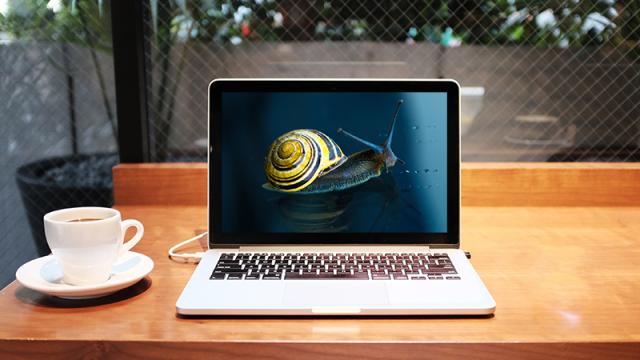Inevitably your computer slows down. You try to open a website and it grinds to a halt, or read an email and it churns along sluggishly. A slow computer, in many ways, is worse than a broken one — or at least infinitely more frustrating.
If you’re going to have any chance of reversing the serious slowdown that’s affected your computer, you’re going to have to work out what’s at the root cause of the sluggishness. Don your detective’s hat and identify the source of the problem with the help of these tools and tricks.
Tidy up your start up items and OS
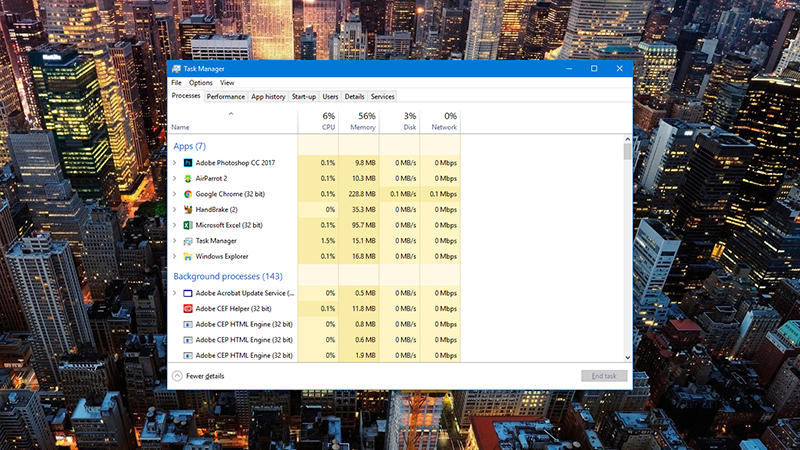
A good place to start is with the apps currently running on your machine and the ones that try and load themselves at the same time as your operating system. For that we need Task Manager on Windows or Activity Monitor on macOS.
Task Manager, which has gotten a lot more user-friendly and useful over the years, can be found by right-clicking on a blank part of the taskbar and choosing Task Manager. Over on macOS, launch Spotlight (Ctrl+Space), then type out “Activity Monitor” and select it when it appears.
In both utilities you can see exactly where your CPU time, disk cycles and RAM are all going, so look out for bad actors hogging more than their fair share of system resources (a quick web search can help if there’s anything you don’t recognise).
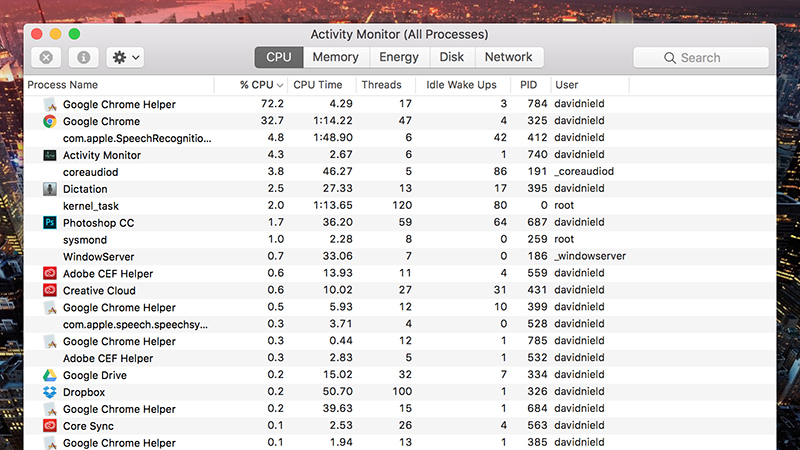
Image: Screenshot
If you come across something that does seem to be making more demands than it should, you can close and restart it, or uninstall it from your system. If you really can’t live without something, check for a newer version, which may have optimizations and improvements for whatever version of the OS you’re on.
Some kind of trial and error approach is usually the best way of working out which apps make a difference to overall performance — shut one down, then carry on working, and see if you notice any improvements.
Even if you don’t uninstall apps, you can at least make sure they’re not booting up with the operating system: on macOS, from System Preferences choose Users & groups, click your name, then choose Login items to see the programs this applies to. Click an item then the minus symbol to get rid of annoying apps. On Windows, switch to the Start-up tab in Task Manager, where you can review and disable entries.

Image: Screenshot
Again, disabling apps one by one is the best way of working out which programs have gone rogue and started slowing your system down.
There’s a bonus utility for Windows users in the form of Performance Monitor. Type “perfmon /report” into the search box on the taskbar, hit Enter, and after a minute you’ll see some detailed data on just how well or otherwise your system’s running.
If you’re still struggling to find the root cause of your system’s sluggishness then a malware or virus problem could be to blame (more likely on Windows but not unheard of on macOS). Run a thorough scan using your antivirus software (and preferably using a standalone scanner on top of that) to make sure nothing untoward has harnessed your computer’s resources for a new botnet or anything else.
Hard drive space, hard drive failure
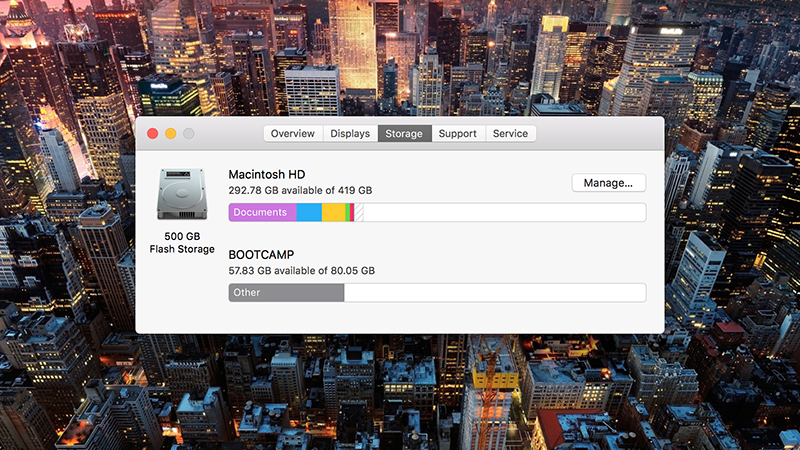
Image: Screenshot
If you’re low on hard drive space then your OS won’t be happy about it and you may well see an overall slowdown as it swaps around files to try and cope — you can check if this is your problem from Storage under System in the Windows Settings app, or by choosing About this Mac from the Apple menu in macOS.
There are no magic tricks for getting more space on your local drive: it’s just a question of deleting files and apps you don’t need any more. Prime candidates for removal could be anything you’ve got backed up elsewhere (like iTunes movies or photos) as well as programs you haven’t used for months (or years).
Windows and macOS are ready to help if needed. Search for “Disk Clean-up” in Windows to identify files that can be safely removed, or click the Manage button on the About this Mac dialog in macOS to clean up clutter and maybe shift some of your files to iCloud.
If you need even more details on what files are taking up what kind of space Disk Inventory X for macOS will give you an big easy to read graphic that also helpfully takes you right to the storage chugging files you want to delete. A nice alternative for Windows users is Windows Directory Statistics.

Image: Screenshot
Even if there’s plenty of spare space, a rapidly failing disk or two can cause system slowdowns for pretty much every program on your system. If you’re using a traditional (non-solid-state) hard disk in Windows, free applications such as CrystalDiskInfo and HDD Health will tap into the diagnostic info being reported back by your installed drives and let you know if there’s anything untoward to know about.
This is less of a problem on modern-day Macs, which tend to use SSD drives. SSDs have diagnostics of their own, but they work in a different way and you need to use a utility that specifically supports SSDs otherwise you risk getting false readings — DriveDx is one of the better options for macOS, though it’s expensive.
Both Windows and macOS have built-in disk checking tools which will scour locally installed drives for obvious errors and patch them up if possible. On macOS, search in Spotlight for “Disk Utility”; on Windows, right-click on a drive in File Explorer, then choose Properties, Tools and Check. If there are physical issues beyond repair then you might just have to fork out for a new hard drive.
Diagnosing problems with individual apps
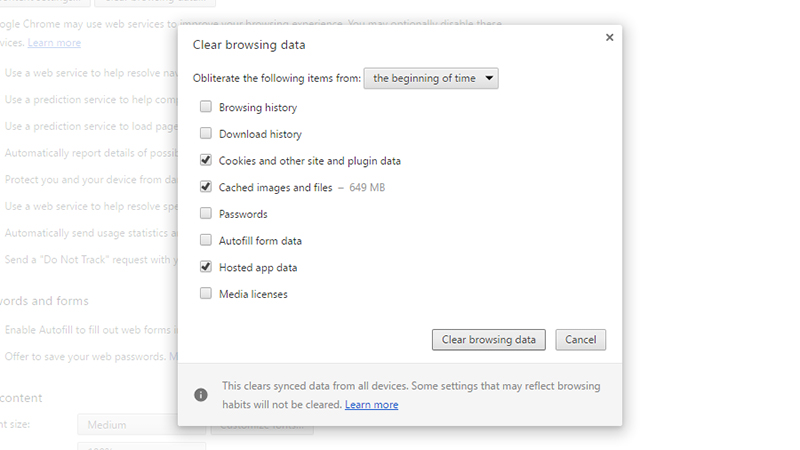
Image: Screenshot
If your slowdown issues only seem to happen when one particular app is running, there may be ways to streamline it. The obvious example is your browser: uninstalling and reinstalling it is one trick you can try, which should be enough to clear out most of the temporary junk that’s accumulated over the years.
You can do a manual clear out too, though it might not make a huge difference to the overall speed of the browser: head to Show advance settings then Clear browsing data on the Settings tab in Chrome, or select Clear Recent History from the History menu in Firefox, for example.
You should try and keep the number of browser extensions down to a minimum, useful as they can be. Culling the extension herd will involve diving into the add-ons page for your browser of choice and disabling or uninstalling anything you can live without.

Again there’s going to be an element of trial and error as you try and work out what’s behind the slowness you’re seeing. If a complete uninstall and reinstall doesn’t fix it, it’s likely that the problem goes deeper than one individual program.
If all else fails…
There’s always a third-party app or two out there to help you in your cleaning: give the likes of CCleaner (Windows and macOS), System Mechanic (Windows), or CleanMyMac (macOS), a look if you’re continuing to have problems and want some professional help. These tools automate a lot of the processes we’ve already talked about and give you a user-friendly interface to manage everything too.
All of which should give you some leads on identifying sources of slowness on your computer. If even those don’t help, and you’re computer isn’t terribly old, than nothing beats a clean reinstall — whether on Windows or macOS. On Windows you can often restore the device to factory settings without even pulling out a Windows OS disk. Open Settings, navigate to Update & Security, click on Recovery, and finally choose Reset This PC to wipe and reinstall the OS.
Things are a little trickier on a Mac. You’ll need to download the OS from the App Store, grab a USB drive, and then build your own boot drive. After a clean install you will very likely find yourself with a zippy machine.
